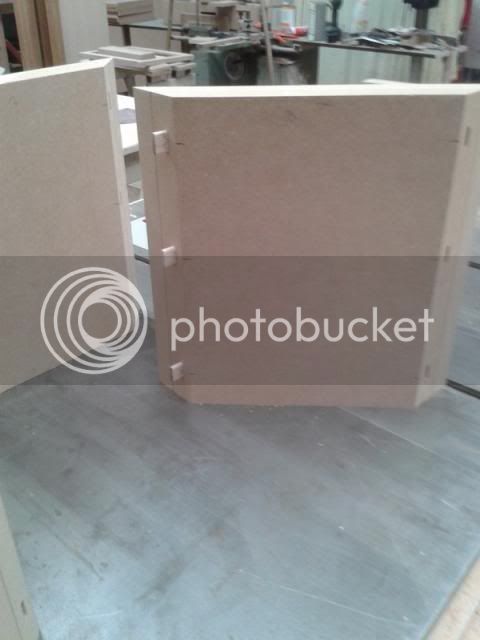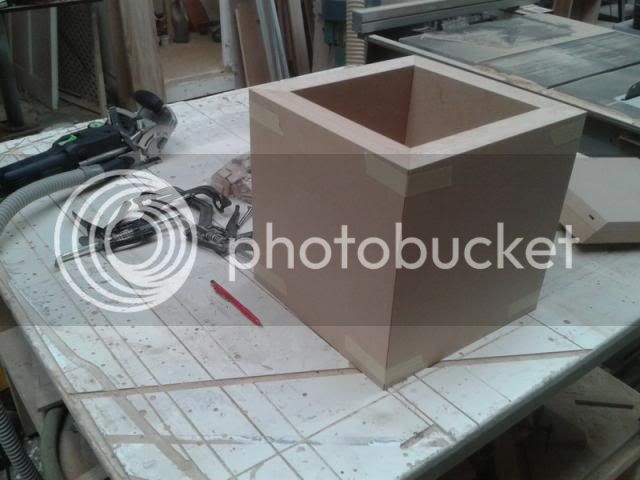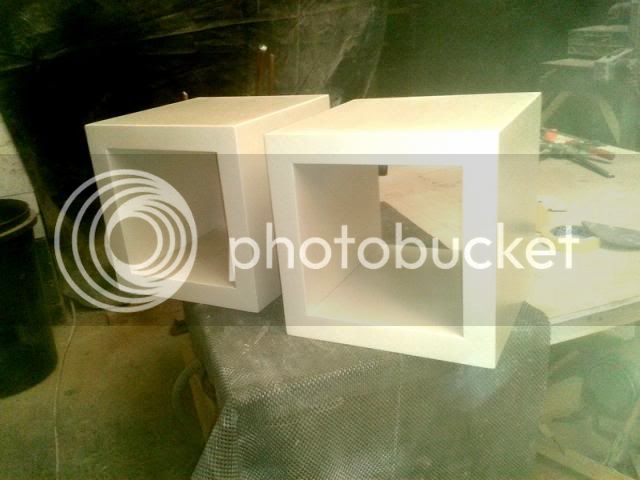After orbital sanders Dominos are my most used power tool, so much so that I got the XL version to use alongside the 500 version. But even though I rate them very highly I haven't stopped using a biscuit jointer...and for that matter I still find myself making quite a few traditional mortice and tenon joints!
The main reason Dominos haven't completely taken over in my workshop is because there are real limits to their flexibility, sometimes I'll incorporate this at the design stage so that a design falls in a Domino sweet spot, sometimes there are workarounds to extend layout flexibility, but sometimes there's just no option but to use biscuits or M&T's.
I'll give you an example, recently I was fitting some 4 1/4" aprons to a table. Each apron to leg joint required two of the 100mm long XL Dominos, the top Domino joint was easy as it could reference off the top edge of the apron and the top of the leg. But the bottom Domino joint wasn't so simple, the spring out pegs on the baseplate didn't reach far enough, and the Cross Stop accessory doesn't function until the mortice centre is something like 115mm from a reference edge. In other words there's a "dead spot", from memory something like 70mm-115mm, where you can't cut a referenced mortice. Consequently in this range you have to work freehand to layout lines. And here's where you encounter an important fact about Dominos. The scribed line on the baseplate that marks the mortice centre is factory set and is dead accurate. But the perspex window that you use to manually cut to a layout line isn't factory set, you have to calibrate it yourself.
I've done this job for my own Dominos and those of other woodworkers, and I've found that there are often glaring errors that will really screw up your work if you don't do this calibration. It's easy to do (you can find the procedure on line) but it's an absolutely critical step. Whilst you're at it, you also need to calibrate the spring out pegs on the baseplate.
I've used Dominos extensively for over five years and I've found a few useful workarounds and accessories to extend flexibility.
You can vary the depth of the mortices by clipping a length of hard plastic tubing (B&Q stock the correct diameter tube) over the sliding bars, this works well and is fully detailed in this guide to the Domino which really is essential reading,
http://www.festoolusa.com/media/pdf/domino_df_500.pdf
If you have one of the earlier 500 Dominos with the spring out metal pegs you're in luck, you can get a range of aluminium discs that slip over these pegs to give you a much wider range of offsets which I find invaluable when assembling frames. If you have one of the later 500 models with the black plastic pegs then these are very accurate and useful accessories (incidentally they also fit the XL),
 After cutting the mitres I cut the Domino slots.
After cutting the mitres I cut the Domino slots.






































